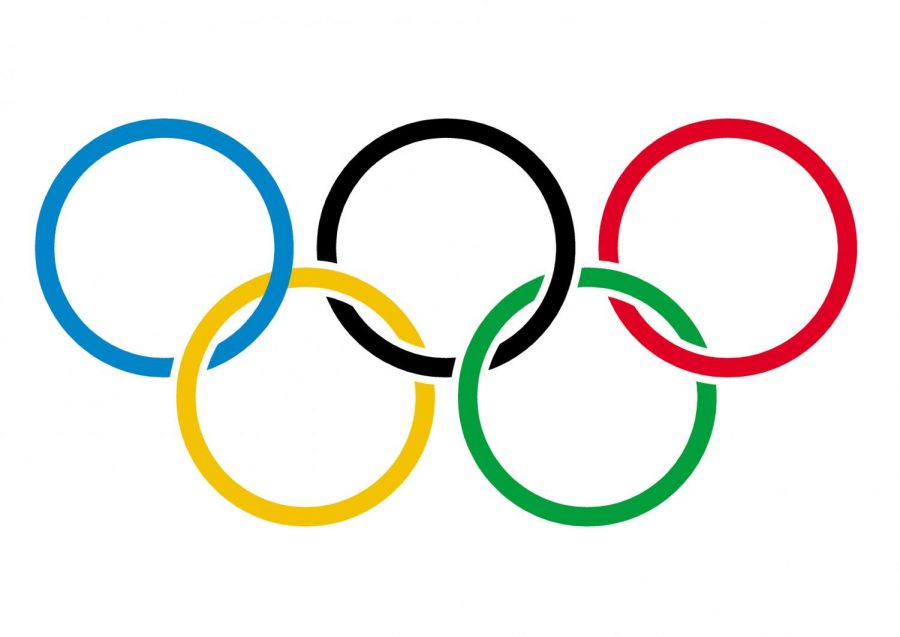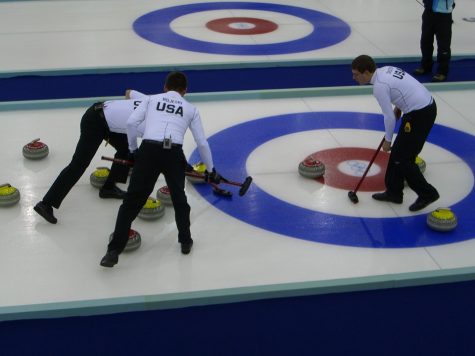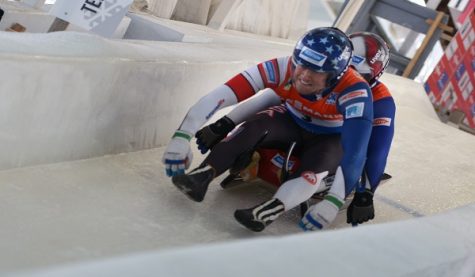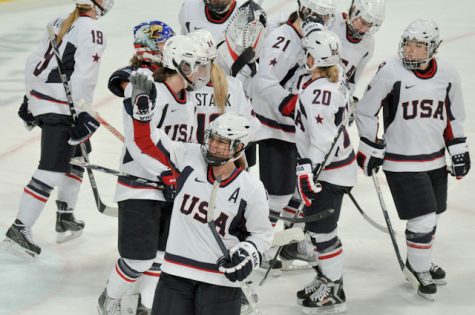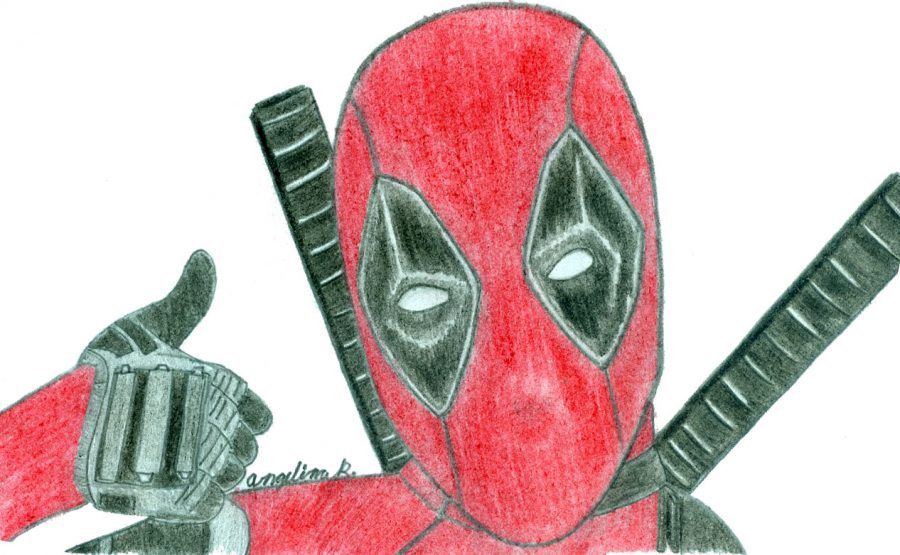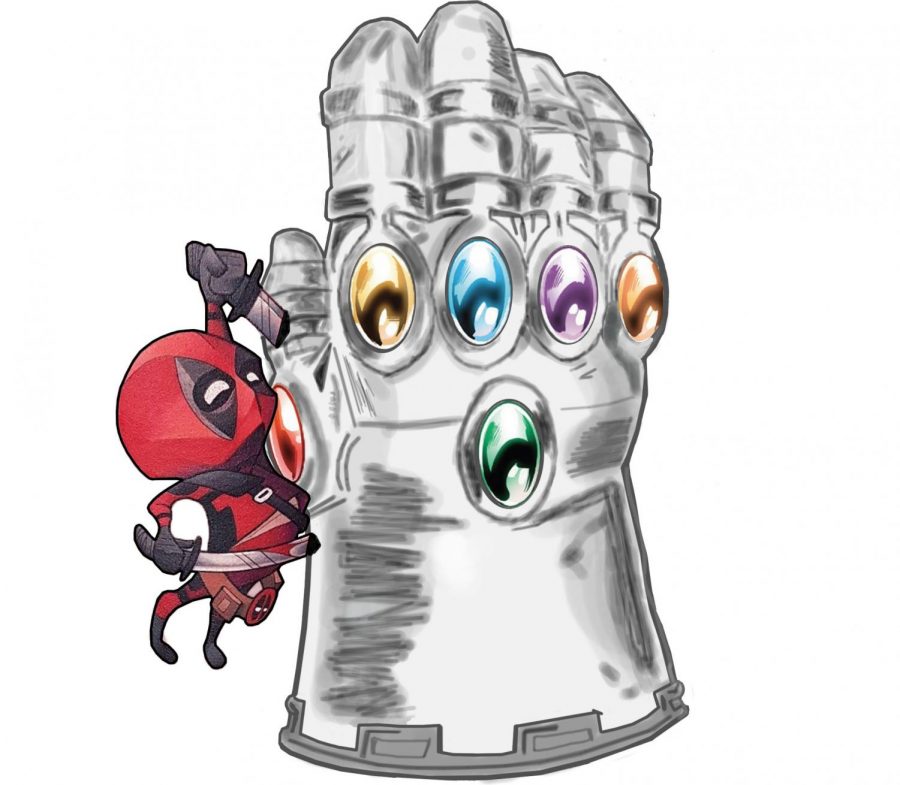Curling:
Curling made its Olympic debut in the 1924 games. After that competition however, curling only made three appearances in the Olympics as a demonstration sport in the 1932, 1988 and 1992 games until being officially added in the 1998 games. Curling has three events: the men’s event, the women’s event and the newly-added mixed doubles event.
The sport involves teams of four or two competing on a special type of textured ice called “pebbled ice,” named for the frozen water droplets on its surface that give it its texture. Two teams take turn “throwing” a 44-pound stone down the ice. One person sends the stone down the ice while three others sweep the ice using brooms to affect the speed and accuracy of the stone. The objective is to get the stone as close as possible to the center circles of a target at the end of the ice.
The United States has only medaled once previously in curling, earning a bronze medal in the 2006 men’s event. In this year’s Pyeongchang games, the U.S. men’s team won gold for the first time ever in the final match against Sweden Feb. 24, with a victory of 10-7. Throughout the games the U.S. team has been labelled as a “ragtag” group of competitors but despite this remained confident, leading them to victory.
Russians Aleksander Krushelnitchii and his wife Anastasia Bryzgalova who competed in the mixed doubles competition were faced with controversy after winning bronze in the event. Krushelnitchii tested positive for a banned substance, failing his required drug test. Russia was infamously banned from the 2018 games after a state-sponsered doping scandal was uncovered, Russians instead competing as the Olympic athletes from Russia. Krushelnitchii and Bryzgalova have since returned their medals.
Luge/Skeleton:
Luge is one of the oldest winter sports, debuting at the Olympics in 1964. From the beginning, both men and women have competed in the event. Luge involves competitors lying on their backs on a sled with their feet straight out in front of them, racing down an icy track at speeds of around 87 mph. There are no brakes.
The United States has only received five medals in luge since its introduction at the Olympics. Chris Mazdzer made history at Pyeongchang this year as the first American to medal in the men’s single event. He won the silver medal on Feb.11.
Similar to luge is skeleton. Instead of racing feet-first, competitors race head-first, on their stomachs. Skeleton made appearances in two early Olympics, the 1928 and 1948 games. It was then dropped but reappeared 54 years later in 2002.
The U.S. has earned a few more medals in skeleton than in luge, receiving eight in total. No Americans medaled in skeleton in Pyeongchang.
Hockey:
Ice hockey finds its origins rooted in Canada in around the early 1800s. However, it found its way to the U.S. in the 1890s. Hockey’s Olympic debut was at the 1920 games, where it has remained since. The women’s tournament was added in 1998.
The United States has won 17 medals in ice hockey. The men’s team has won 11 and the women six. Since the introduction of the women’s event, it has been a competition between Canada and the U.S., the Americans winning gold in 1998, the Canadians every year after.
In PyeongChang this rivalry continued, the gold medal match between the two countries. This time however, the Americans came out victorious. In a drama-filled game, the United States women won 3-2 in overtime, bringing the gold medal back to the states.
The men’s team, however, did not find the same success. Due to the National Hockey League’s (NHL) decision to not allow their players to compete in the Olympics, the men’s team had to consist of “no-name,” non-established players. This led to a struggle for the men, resulting in a seventh place finish.
Photos from Google.


